Yoga for Anxiety
Published February 28, 2020 by Sheila Anne MurrayDuring times of anxiety, our brain is simultaneously firing and paralyzed by panic. Practicing yoga can help us step outside of our anxious minds, tap into our bodies, and find our breath and some peace once again.
The mantra for this practice: “I know that I am inhaling. I know that I am exhaling.”
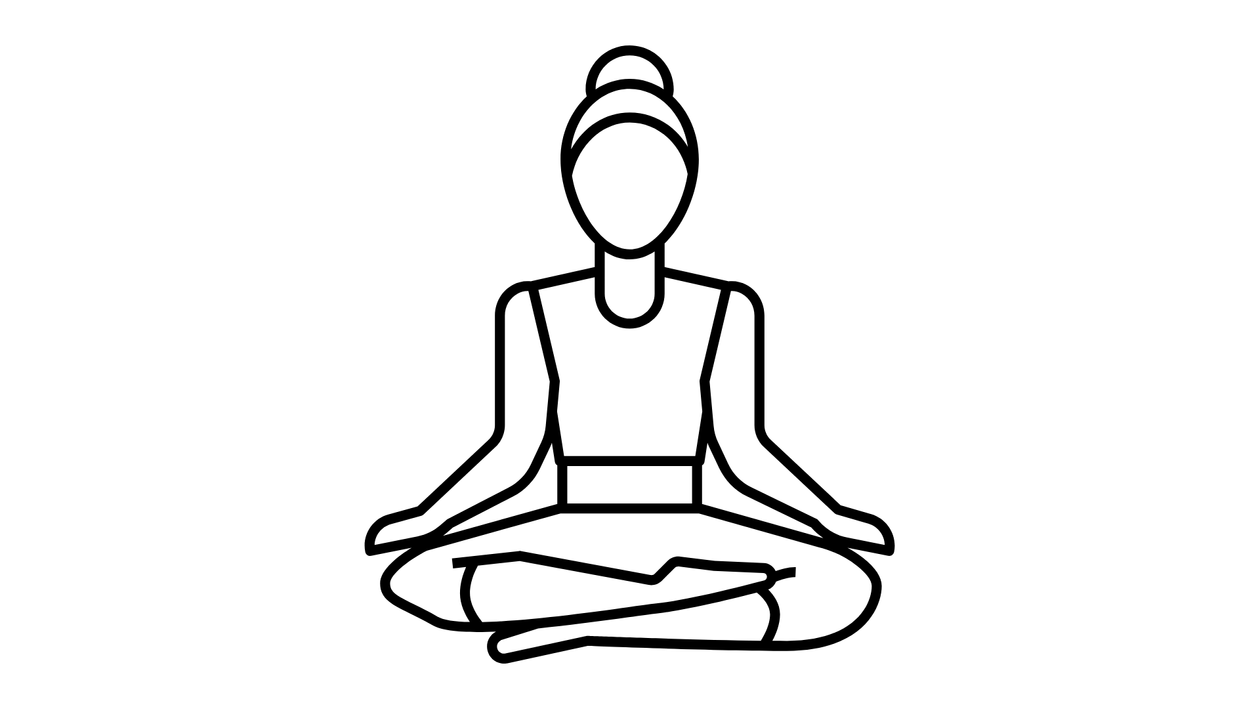
Breathing
I begin each yoga class with breathing. I believe it’s a crucial part of the practice, as the body depends on the breath to be a guide throughout the practice. Our ability to manage our breath allows us to move deeper and more freely. As this is yoga for anxiety, I thought it necessary to include breath work along with the other poses. Intentional breathing signals to the body that it’s time to rest, rejuvenate and regenerate
Ok, after that introduction… It’s time to breathe!Start in seated with eyes closed or with a soft gaze if closing your eyes feels uncomfortable right now (or if you need to read this over a few times :) )
Begin to notice your breath as you inhale and as you exhale.
Try that mantra I mentioned “I know that I am inhaling. I know I that am exhaling.”
Now we’ll engage the parasympathetic nervous system using Sama-vritti or an (equal breath ratio). Inhale for a count of 4, exhale for a count of 4. If you feel comfortable, bump it up to a count of 6 or 8, continuing with the equal ratio of inhales to exhales.
If you want to play with the breathing part of the practice a bit longer, go for it! I love this Yoga with Adriene video.
Extended Puppy Pose
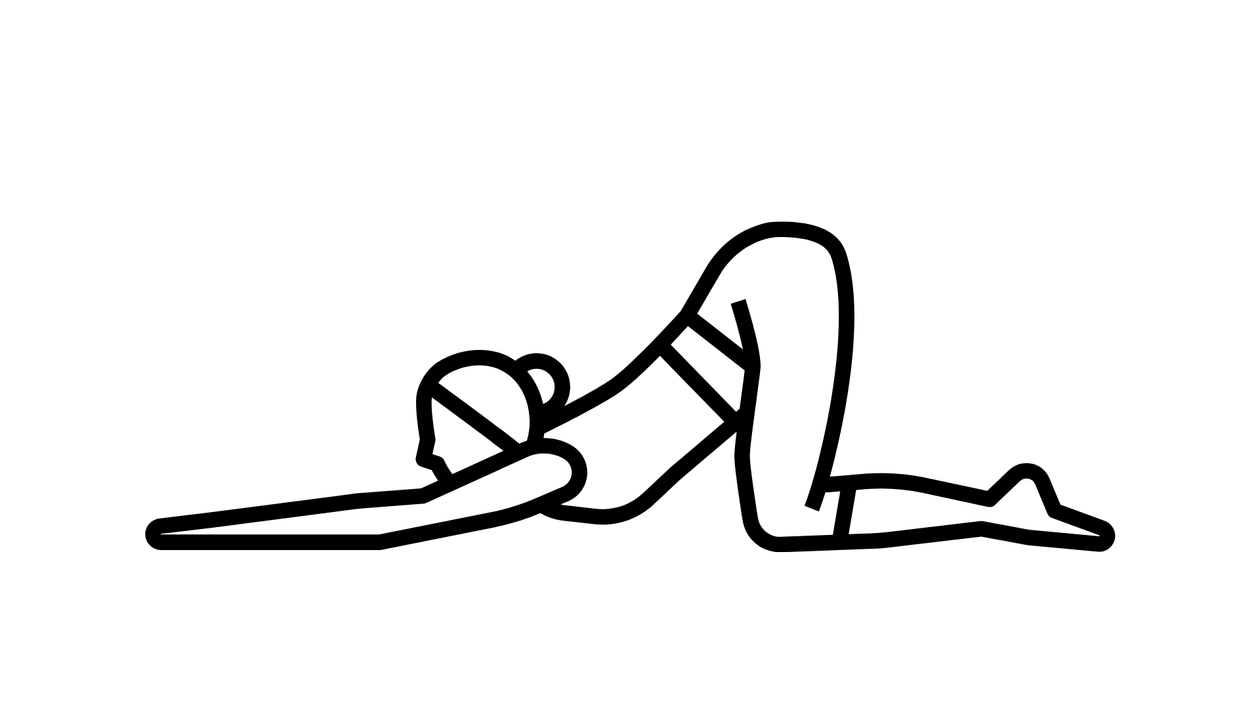
Come into table top (hands and knees)
Walk your palms forward a few inches and sink your glutes back toward your heels
Press down into your palms and fingertips, keeping arms active and elbows off the mat.
Allow your forehead to come to rest on the mat
Think about opening your chest up and soften into areas of tension
Think of puppies and see if that makes you feel calmer 🐕 😉 or just breathe here for 1-2 minutes
Half Pigeon Pose
This pose is a great hip opener and it releases stored negative energy and emotions. If you have any knee issues or your body doesn’t feel warm, please scroll to the modification.
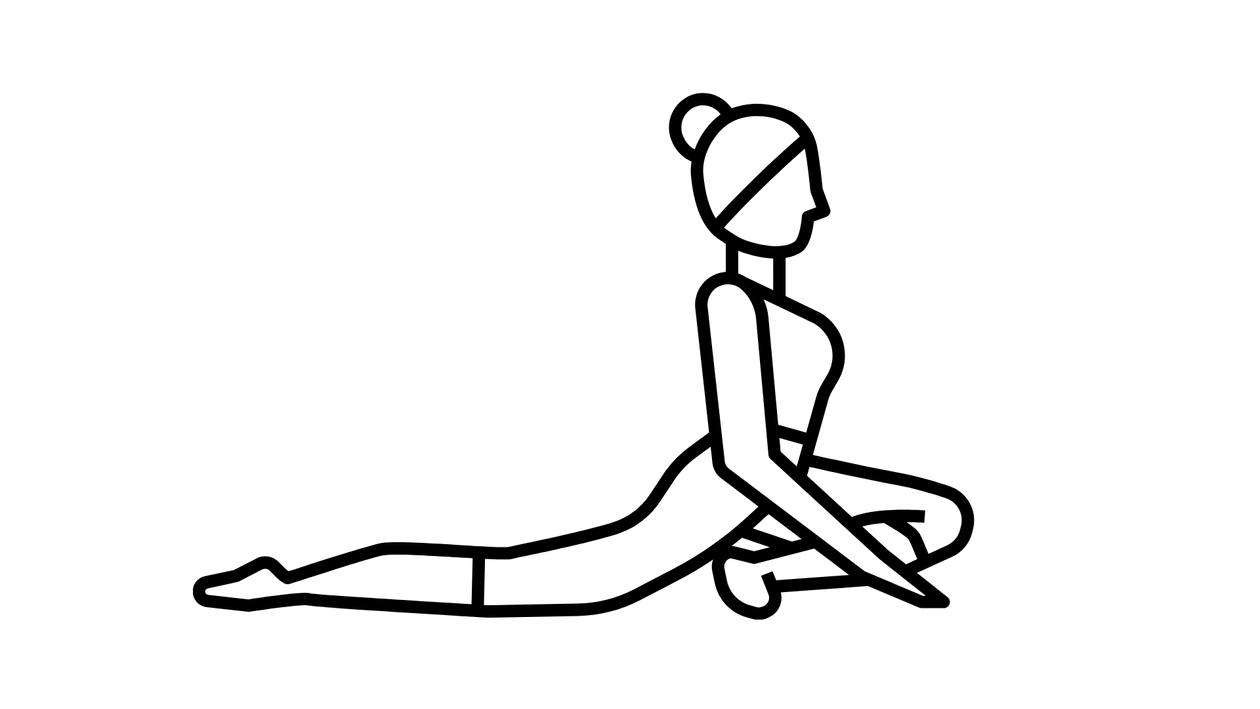
From table top, bring the right knee toward the right wrist and extend the left leg out flat toward the back of the mat.
For the least amount of tension in the hip, keep the right calf tucked under the core of the body.
For more tension, bring your right ankle toward the left wrist, so that the right calf is more parallel with the front of the mat.
You may stay upright or allow your body to fold over the front leg.
You may feel an intense stretch deep in the ball socket of the hip joint. This can bring up emotional waves for many people. I invite you to meet your thoughts and energy with curiosity and compassion rather than judgement and negativity.
This pose may feel intense but it should never hurt! If you are feeling pain, please move to the modified versions.
Breathe deeply and hold the pose for 10 - 20 breaths. Switch to the other side.
*Modification 1 — Bring The Floor To You
Come into the same posture but place a blanket or pillow under the active hip, so that as the hip moves toward the ground, it is met instead by your blanket/pillow. This will promote a feeling of support and ease.
*Modification 2 — Reclined Pigeon Pose
Start on your back with your knees bent, hips distance apart, and feet pressed into the mat.
Place the right ankle on the left leg, just below the knee. Allow gravity to do some work here, as your right knee falls toward the mat.
To go deeper, raise your left knee toward your chest clasp your hands around your left thigh or left calf and hug in toward your chest.
Balasana
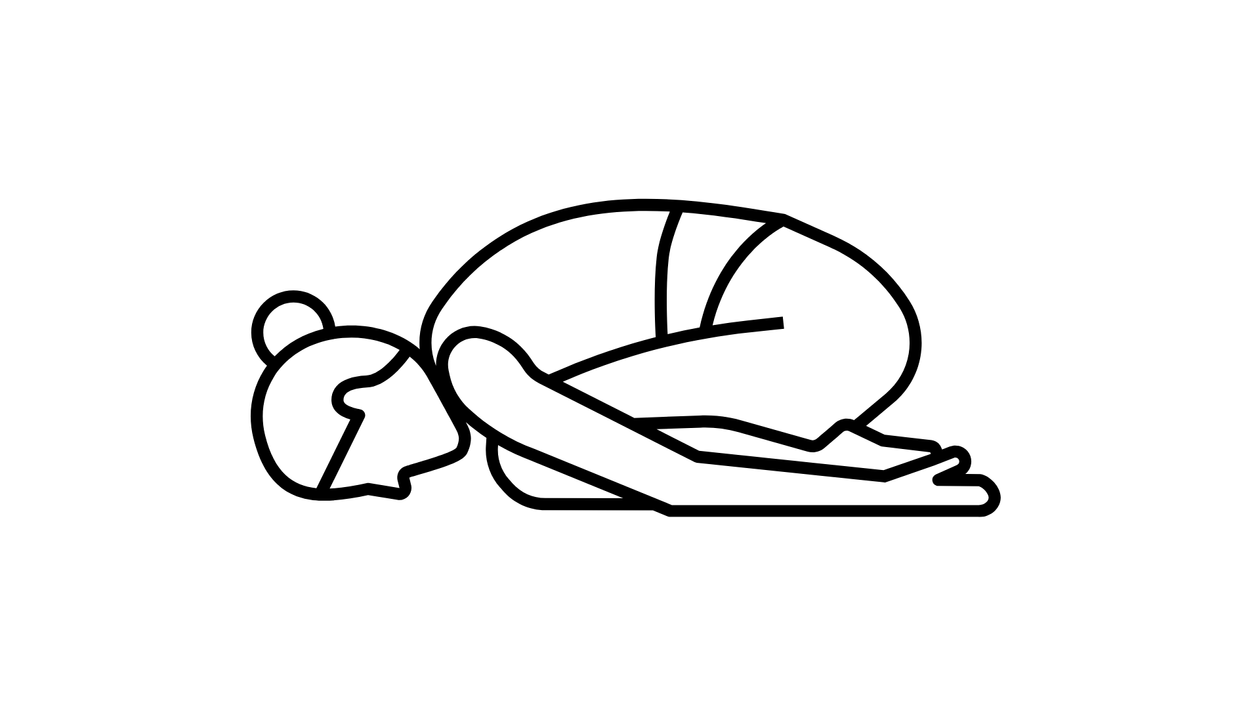
Start in table top, then bring your toes to touch and your knees wide towards the sides of the mat.
Sink your hips back towards your feet, allowing your glutes to rest, and walk your hands forward toward the front of the mat.
Allow your forehead to come down to touch the mat and your chest to relax down with the help of gravity.
Either stay here and breathe or wrap each arm around your side body towards your ankles. This will promote a feeling of security and it’s like you’re giving yourself a little hug <3
Legs Up The Wall
You’ll need some clear wall space and a supportive prop this one!
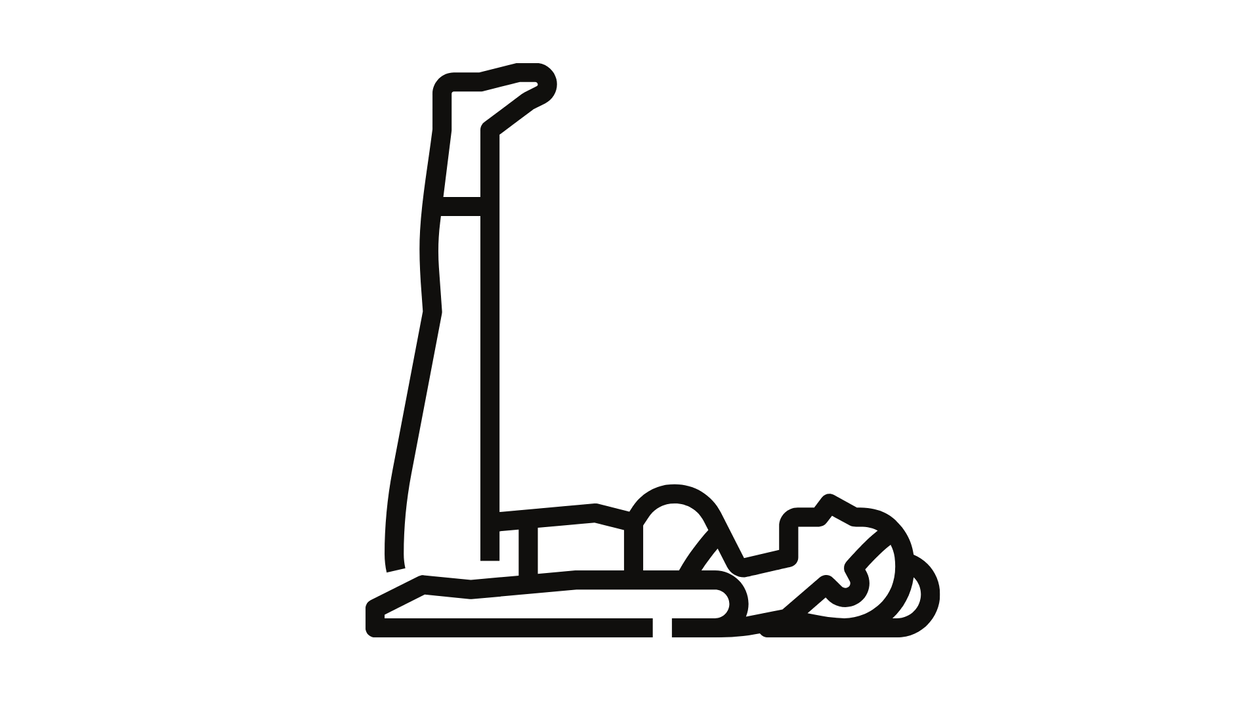
Place a firm pillow, folded blanket(s), or bolster against the wall
Sit atop the prop, then maneuver yourself using your hands and hips so that your legs are up the wall, your glutes and hips are resting on the prop, and you can rest your back and upper body on the ground or mat.
Let your arms rest open at your sides, palms facing up.
Feel your legs release and relax, dropping down toward the back of your pelvis.
Breathe here for anywhere from 5 - 15 and allow yourself to simply receive all of the amazing benefits!
Take great care as you release. Slowly push yourself away from the wall and slide your legs down to the right side. Use your hands to help press yourself back up into a seated position.
Bound Angle & Reclined Bound Angle
For bound angle, start seated and bring the soles of your feet to touch.
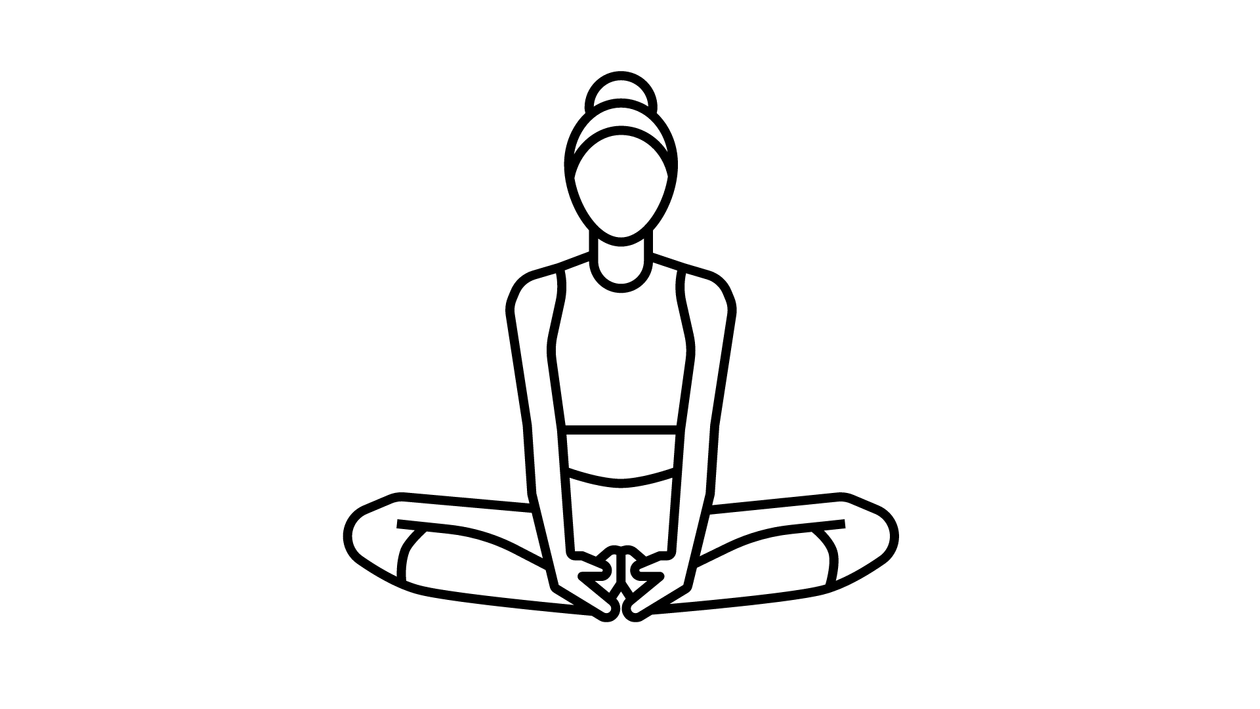
To add support and make this even more relaxing, place blankets, blocks, or pillows underneath each knee.
Allow your chest to grow heavy and move toward your feet but try and hinge at the hips and keep your spin straight.
For reclined bound angle, place your hands behind your back and walk down to your forearms. Again, you can use props to support you here. Otherwise, you can walk all the way down so that your back is on the mat.
You might want to put both hands on to your chest or on to your belly, or you might want to put one hand on to your heart and the other on your belly.
Continue with deep inhales and exhales.
If you enjoyed this yoga sequence, you may be interested in this practical application of how to move through a negative emotion such as anxiety.